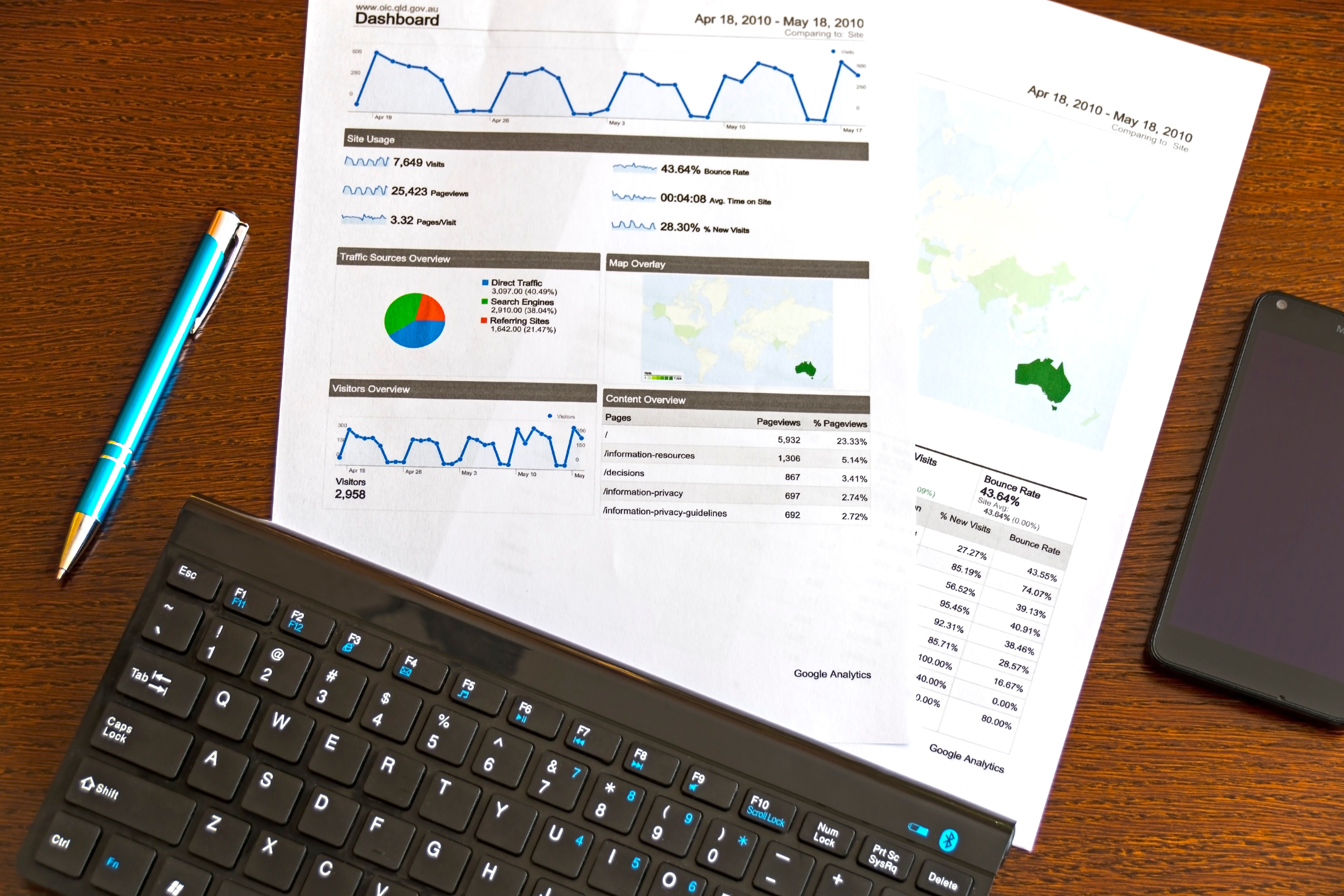Lean Six Sigma Marketing
Is Digital Marketing Lean Six Sigma Marketing?

In short, Lean Six Sigma Marketing is all about cost effective, resource and process optimized marketing which can provide you better results and better Return on Investment (ROI). This includes achieving highest level of ‘customer satisfaction’ and most ‘desired revenues’ for the company.
In pre-internet times, the lean six sigma marketing required to have less marketing people with less marketing budgets for TV, newspapers and radio advertising and having efficient sales processes, with fast deliveries and customer friendly centricity which all should help to get more sales.
In essence, the lean six sigma marketing aimed for utilization the existing resources i.e. human, capital, material and time in the most efficient and effective way possible to achieve the lean six sigma marketing goals.
In the modern internet times, things have changed drastically. Since the main goal for any Six Sigma project is the end result (the improved form), therefore, it is required to study the process backwards. Though the end goals in present times remain the same that is ‘more sales’ and ‘customer satisfaction’, however, the dynamics of getting the goals achieved have changed somewhat.
The arrival of ‘digital marketing’ has opened up new avenues. It is equivalent of now ‘lean six sigma marketing’ as it is helping to save money, resources, time and material and to get even better results.
What is Digital Marketing

In the simplest way, ‘Digital Marketing’ is using the internet to market your products and services to people. As we all may know the world of internet has grown to a huge audience.
Total World population 7.8 Billion (As of 2020)
1. Internet users: 4.8 Billion (https://www.internetworldstats.com/stats.htm)
2. Facebook users: 2.5 Billion (https://www.omnicoreagency.com/facebook-statistics/)
3. YouTube users : 2 Billion (https://www.omnicoreagency.com/youtube-statistics/)
4. Instagram Users: 1 Billion (https://www.omnicoreagency.com/instagram-statistics/)
5. LinkedIn Users: 675 Million (https://www.omnicoreagency.com/linkedin-statistics/)
6. Pinterest users: 335 Million (https://www.omnicoreagency.com/pinterest-statistics/)
7. Twitter Users: 330 Million (https://www.omnicoreagency.com/twitter-statistics/)
Everyone on this earth is now connected to one of the above services or all. In other words, every business customer is using the smart devices and is already online.
If we use the Six Sigma Marketing equation DMAIC (Define, Measure, Analyze, Improve & Control), we can systematically plan our digital marketing with the help of Lean Six Sigma.
Six Sigma Lean Marketing (DMAIC) – Define Stage
What is the current issue / problem area – low sales, product or service defects, longer wait times, low customer satisfaction etc.
How huge is the problem or loss (numbers)?
What is the impact of the problem or loss on company or customers?
What are objectives of the Lean Six Sigma Project?

Six Sigma Lean Marketing (DMAIC) – Measure Stage
What are the existing sales volume and through which channels?
Who are the existing customers, and what is their feedback?
What are the product and services main features as well as defects?
What are the problems areas in the products and services?
Get all the possible data on the existing state of affairs and especially on the existing problem areas. (Definitely if there are no problems, you will not be doing Six Sigma approach to solve the issues)
Six Sigma Lean Marketing (DMAIC) – Analyze Stage
Now you have found the problem areas in the ‘Measure stage’, now find the root causes which are creating those problems.
You may use some simple methods e.g. fishbone diagram or you can also use the graphs to see the data visually and you can also use some basic statistical measures like mean, median, range and standard deviation. Though these statistics are extensively used in the formal Six Sigma project, however, in your Lean Six Sigma Marketing you can use the basic and simplest statistical measure to aid you to find the existing patterns leading to the root causes of the problems.
You may also get many surprises here, your previous perceptions and myths may get shattered if you really use such statistical measures and tools to know the actual root causes of the problems.
Finally determine the root causes for the problems/issues - less sales, product/service defects, longer processes, less marketing budgets, weak advertising messages, wrong advertising platforms and weak targeting.
Six Sigma Lean Marketing (DMAIC) – Improve Stage

Based on the newly found root causes of all the ills and problems, you need to determine what requires to be changed? – product, service, process, people (or any combination).
Now start removing the product or service defects. Develop new process flows that should be shorter and smarter to satisfy the customers and or be able to bring in more sales and revenues.
This is the stage where you can plan and design the usage of new channels of marketing – Google Search Engine, Facebook, Instagram, Twitter, LinkedIn, Pinterest and YouTube.
Develop the financial budgets a little less than the precious ones to justify that you will be saving more.
Improve the marketing messages with strong copy and use the smart online channels to find your customers and reach more customers.
At this stage, lot of more Six Sigma tools and techniques are used, though I would not get into that complexity at this stage, but it is only to understand that this stage is certainly critical and thorough because with the clarity of past measurements, you will be able to design your future well now. It may happen that all the problems sometimes cannot be fixed or eliminated 100%. But is OK for now. Even some improvements from the past can certainly set the tone for the more improvements in the future.
Six Sigma Lean Marketing (DMAIC) – Control Stage
This is the final stage when everything is sorted out i.e. problems found, causes to the problems also found, eventually problems fixed and new processes and ways of doing things made.
Though this may be a great achievement. But the experience and reality tell us that if we don’t monitor the fixes in the long run, these new fixes can easily go back to its original bad state like a rubber band. That is why the ‘Control’ is very important when we especially talk about the Lean Six Sigma Marketing.
You need to devise a solid monitoring and compliance mechanism that may in the shape of some additional responsibility to the existing staff, some management dashboard and some regular daily, weekly and monthly reports to all the concerned stakeholders just to show and prove that everything is going as per the plan and working smoothly and bringing in the right and desired results.
When All is Said and Done!

With the above Lean Six Sigma Marketing Stages completed, now you will have the better understanding of what was going wrong, and what required to be changed, improved and controlled.
Though I agree that applying Six sigma mindset and techniques is a holistic concept, it is not only limited to using only the digital marketing channels. But, it certainly helps to change your work flows and human resources as well.
Earlier, when you were advertising in the conventional main stream media, you needed to have a graphic designer, copy writers, media mix planners, media buyers and coordinators. All these human resource can now be reduced to a bare minimum of 2 or maximum 3 qualified digital marketers who can run the full blast online campaigns month after month.
The flip side of the conventional main stream marketing is that you are blindly targeting, rather equivalent of no targeting. And you would not have the analytics about your audience, who watched your Ad on the TV, who listened to your Ad on the Radio, who read your Ad in the newspaper and magazine. You only rely and console yourself based on the total circulation of the media, which is a great myth as well. In addition, when you have completed your campaign you are not even going to get any analytics about the consumer insights who interacted with your advertisement and how they reacted.

This way of doing things certainly is a ‘non-six sigma way’. Whereas in the modern age, smart online marketing channels have already brought the power of analytics based on the real hard data of the consumers. In spirit, this is the most central concept of the Six Sigma Reality – the data driven analytics and results.
Henceforth, I would say that blending Lean Six Sigma Marketing with Digital Marketing is like a marriage made in heavens. It is the most natural merger between Lean Six Sigma Marketing and the Digital Marketing which gets easily embedded into its Six Sigma DMAIC equation to achieve the most desired results and advantages for the marketing goals.
The essence and true spirit of Six Sigma or in this case, Lean Six Sigma Marketing, is all about improving the existing marketing processes to such an extent that it should help to satisfy the customers with your product and services as well as it should bring the desired revenues for the company. And if Digital Marketing is helping to achieve that strategy, then, by all means go for it, to use it in your Lean Six Sigma Marketing.